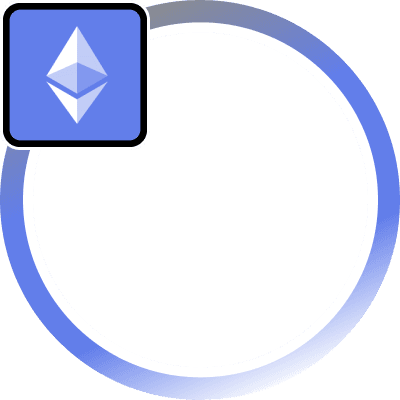Background and History
Linear Finance was launched to address the growing demand for decentralized access to both digital and traditional assets. The platform provides a solution for users who want to gain exposure to a wide range of assets without the friction of traditional financial intermediaries or the limitations of existing DeFi platforms.
Leveraging a cross-chain architecture, Linear Finance supports synthetic assets that replicate the price movements of underlying assets such as commodities, indices, and cryptocurrencies. The protocol aims to make asset management more inclusive and accessible by reducing slippage, increasing liquidity, and lowering transaction costs.
Key Features and Technologies
Synthetic Assets (Liquids)
Linear’s core innovation is its synthetic assets, known as Liquids, which allow users to gain exposure to traditional and digital markets without directly holding the underlying assets. These assets can be minted using Linear USD (ℓUSD), a stablecoin issued by the platform when collateral is staked.
-
Collateralized Debt Pool: Users can stake digital assets, including the native LINA token, as collateral to mint ℓUSD. This collateral is pooled to provide instant liquidity for trades, ensuring that users can move in and out of positions seamlessly.
-
Wide Market Access: Liquids provide exposure to a variety of asset classes, including cryptocurrencies, commodities, and indices, allowing users to diversify their portfolios on a single platform.
Cross-Chain Compatibility
Linear Finance’s cross-chain architecture allows users to interact with both Ethereum and EVM-compatible blockchains, providing flexibility and lower transaction fees.
-
Efficiency: By separating smart contract logic across blockchains, Linear reduces the gas fees associated with transactions and increases the speed of trade settlements.
-
Interoperability: The platform supports a cross-chain bridge that allows users to transfer assets between different blockchain ecosystems, ensuring composability across DeFi protocols.
LINA Token
The LINA token plays a critical role in the Linear ecosystem. It serves as the native utility token used for staking, collateralization, and governance.
-
Collateral and Minting: LINA tokens are used to mint ℓUSD, which in turn allows users to purchase synthetic assets. A high pledge ratio of collateral ensures system stability, with the starting pledge ratio set at 500%.
-
Governance: LINA holders participate in the governance of the platform through LinearDAO, voting on key decisions such as protocol upgrades, inflation rewards, and transaction fees.
Inflationary Model and Staking Rewards
Linear follows an inflationary tokenomics model, designed to incentivize early participation in the platform through staking rewards. Stakers of LINA receive a pro-rata share of transaction fees and additional rewards from the platform’s inflationary schedule.
- Yield Farming Campaigns: To attract liquidity providers, Linear offers yield farming opportunities, rewarding users who provide collateral with LINA tokens.
Usage and Applications
Portfolio and Risk Management
Users on Linear can create custom portfolios that include a mix of synthetic assets, giving them exposure to multiple asset classes. The platform’s low transaction costs and cross-chain capabilities make it suitable for both short-term traders and long-term investors.
-
Liquidity Provision: Users can provide liquidity to the platform by staking collateral and minting synthetic assets, earning rewards in the form of LINA tokens.
-
Risk Mitigation: The platform’s collateralized debt pool ensures that liquidity is available to handle large trades, minimizing slippage and ensuring fair market prices for users.
Traditional and Digital Asset Exposure
Through Linear Exchange, users can trade synthetic assets that represent the value of traditional assets like commodities and indices, as well as digital currencies. This allows users to hedge their portfolios or gain exposure to new markets without needing to interact with traditional financial institutions.
Governance and Tokenomics
LINA Token Utility
The LINA token has several key utilities within the Linear ecosystem:
-
Staking and Collateralization: LINA tokens are staked to mint ℓUSD and are used to collateralize synthetic assets on the platform.
-
Governance: LINA holders vote on key governance decisions through LinearDAO, ensuring a decentralized and community-driven platform.
Inflationary Rewards
The platform’s inflationary model ensures that early participants are rewarded for their contributions. The initial inflation rate is set at 60%, with rewards distributed to stakers and liquidity providers based on their engagement with the platform.
Notable Events
-
2020 — Platform Launch: Linear Finance launched its synthetic asset platform, enabling users to mint and trade synthetic assets with minimal slippage.
-
2021 — Cross-Chain Compatibility: The platform integrated cross-chain functionality, allowing users to interact with multiple blockchains, including Ethereum and other EVM-compatible chains.
-
2022 — LinearDAO Governance: LinearDAO was introduced, enabling decentralized governance and giving LINA holders a direct role in shaping the platform’s future.
Relevant Metrics and Data
-
Transaction Fees: Users are charged a 0.25% fee on synthetic asset trades, with fees distributed to liquidity providers and stakers.
-
Pledge Ratio: The platform’s starting pledge ratio is 500%, ensuring that synthetic assets are fully collateralized and reducing systemic risk.
-
Inflationary Tokenomics: LINA token rewards are distributed through an inflationary model, with rewards decreasing over time as the platform matures.








